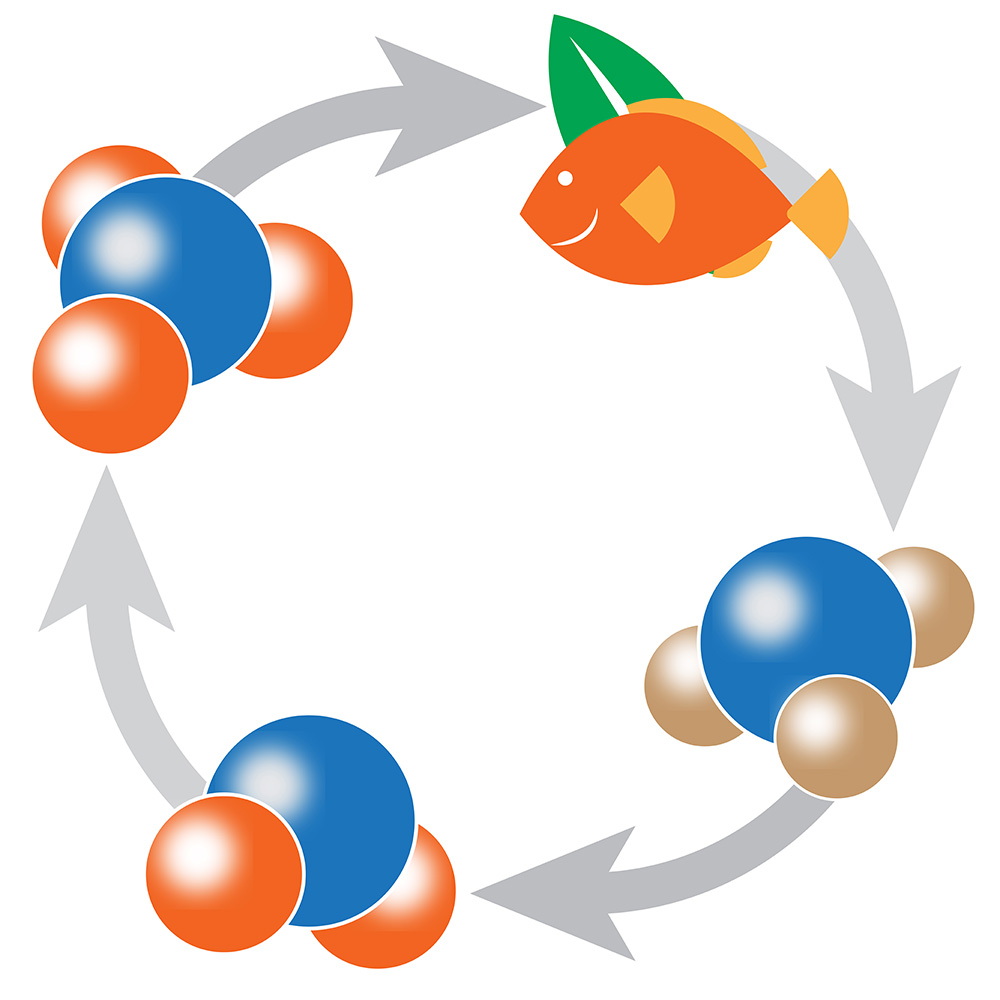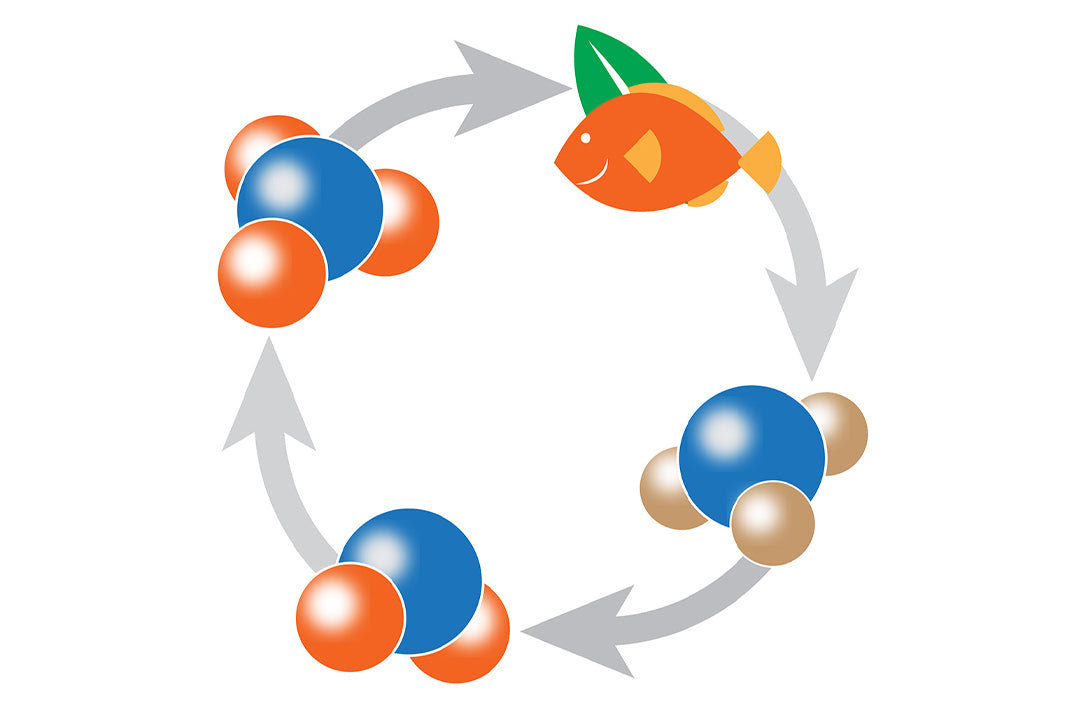Before you start adding fish to your aquarium, it is best to let the aquarium “cycle.” A “cycled” aquarium is one that has an established population of the bacteria that convert ammonia to nitrite and nitrite to nitrate. Ammonia and nitrite levels in your tank reach 0 ppm (parts per million) — the length of time it takes to fully cycle can vary. Most aquariums will eventually cycle on their own, however the loss of fish can be significant if the process is not controlled because ammonia and nitrite are highly toxic to aquarium fish.

— Michael Griffith, Aquarium Hobbyist Magazine (Q1 2018)The nitrogen cycle is one of the most important concepts to understand when setting up a new aquarium.
- The nitrogen cycle begins when nitrogenous waste such as fish waste, uneaten food, and decaying plant matter gets broken down and releases Ammonia (NH3/NH4 — very toxic to fish).
- Ammonia and other nitrogenous waste is converted by oxidizing bacteria into nitrite (NO2 — toxic to fish).
- Nitrite is converted when bacteria is metabolized into nitrate (NO3 — not as harmful to fish). Maintain nitrite levels below 20 ppm, ideally 5 to 10 ppm.
- Plants are fertilized by the nitrates. Through a combination of decay and excretions from fish that eat the plants, waste matter generates ammonia to continue the cycle.

